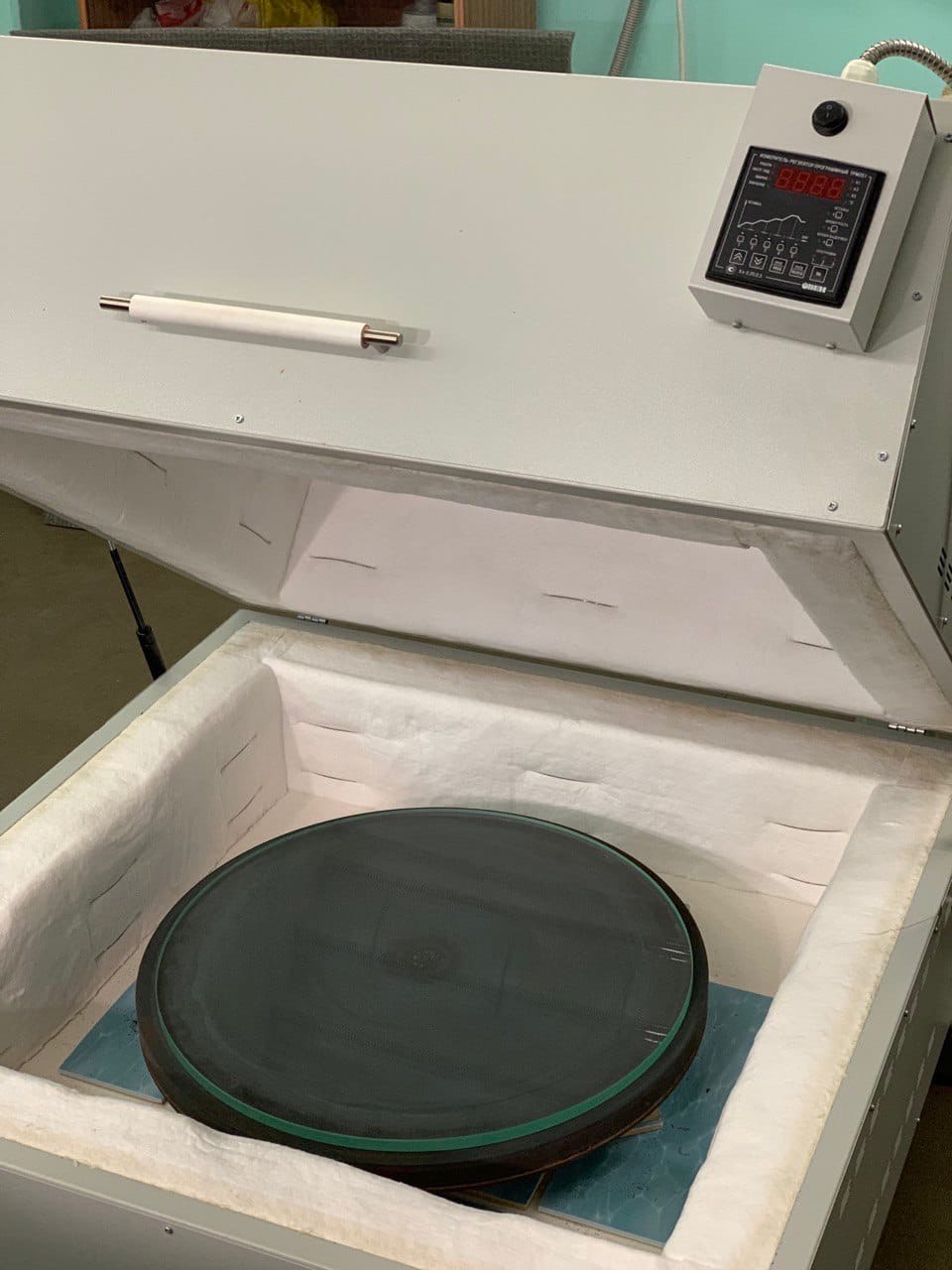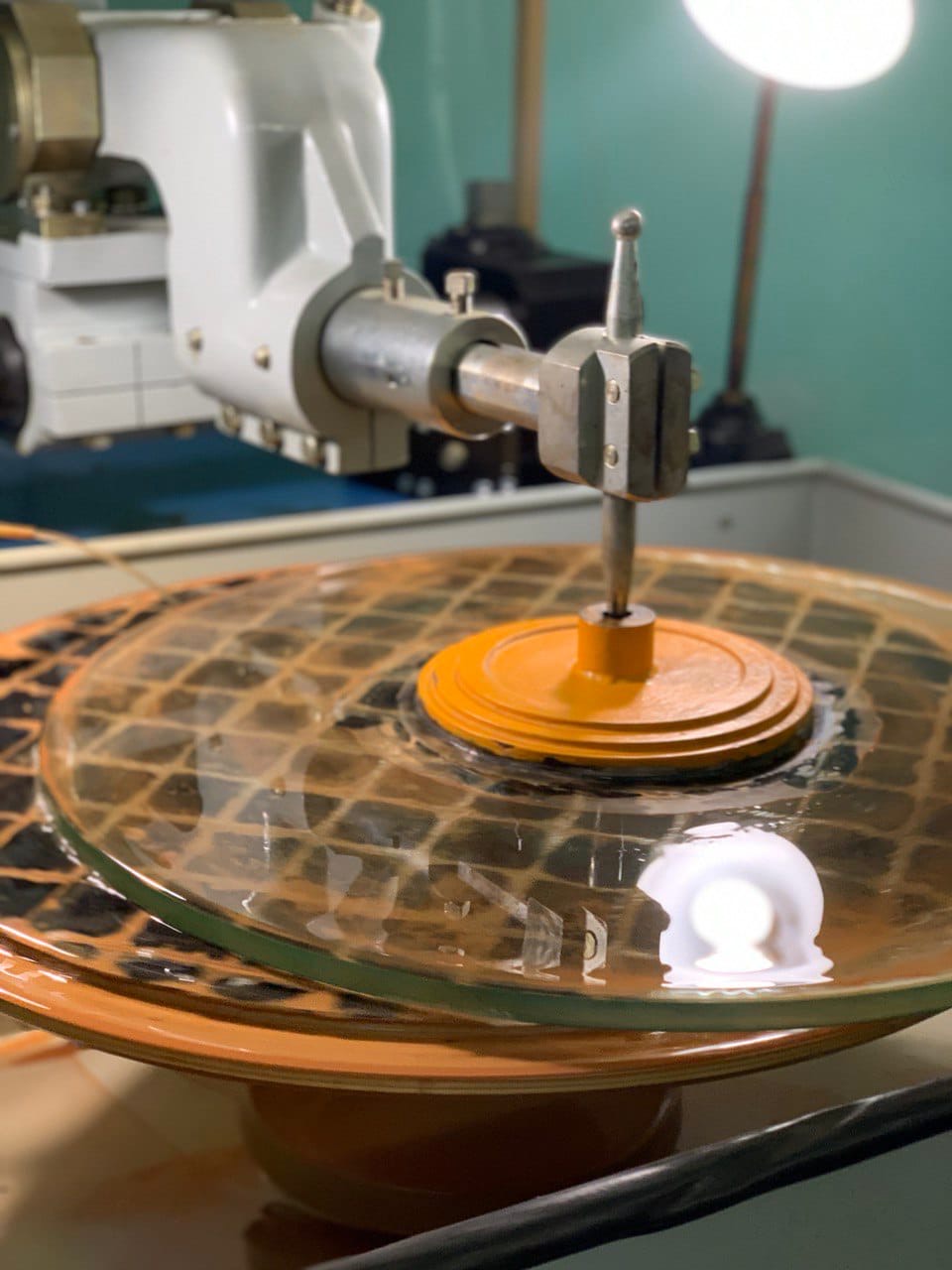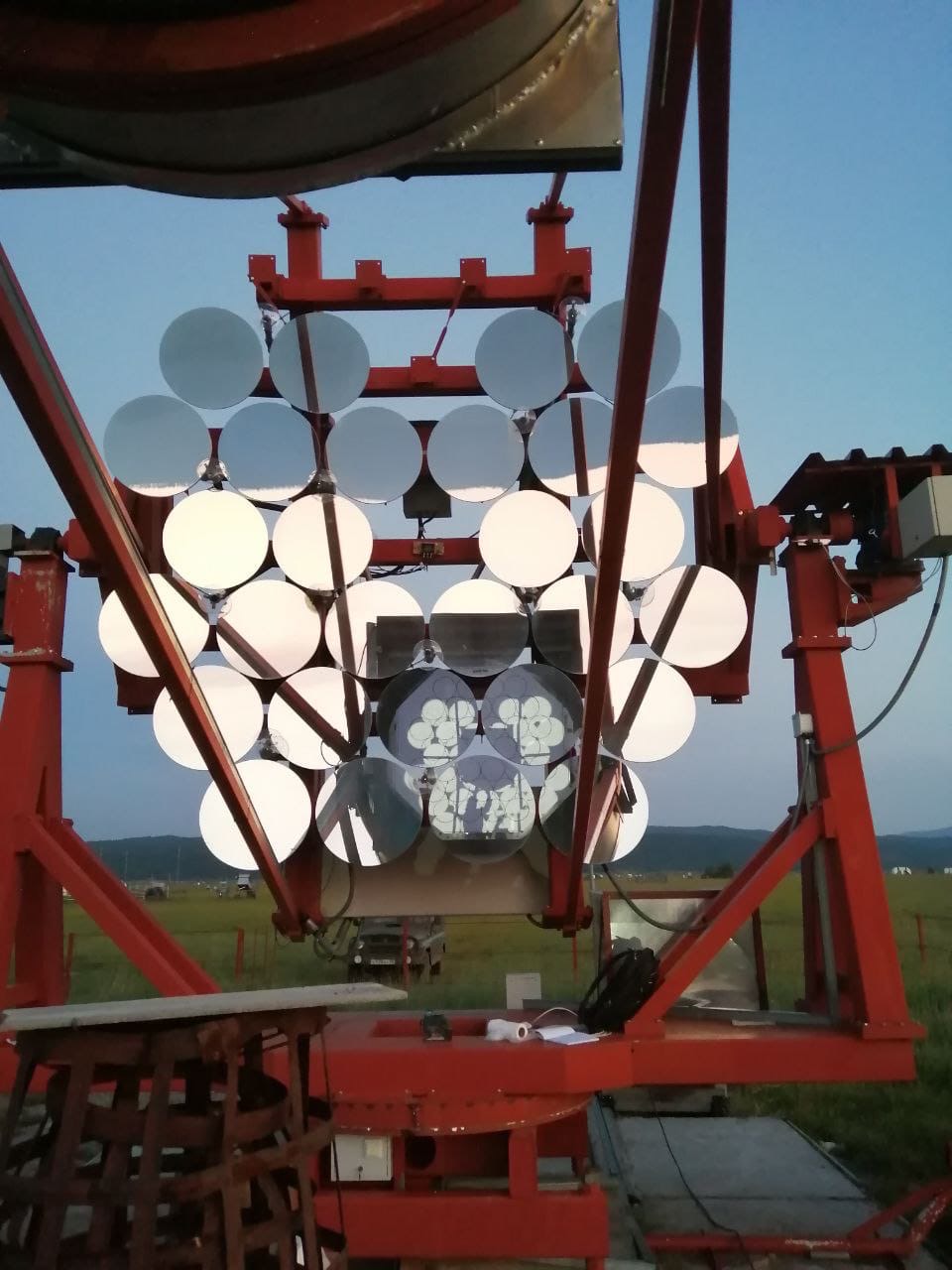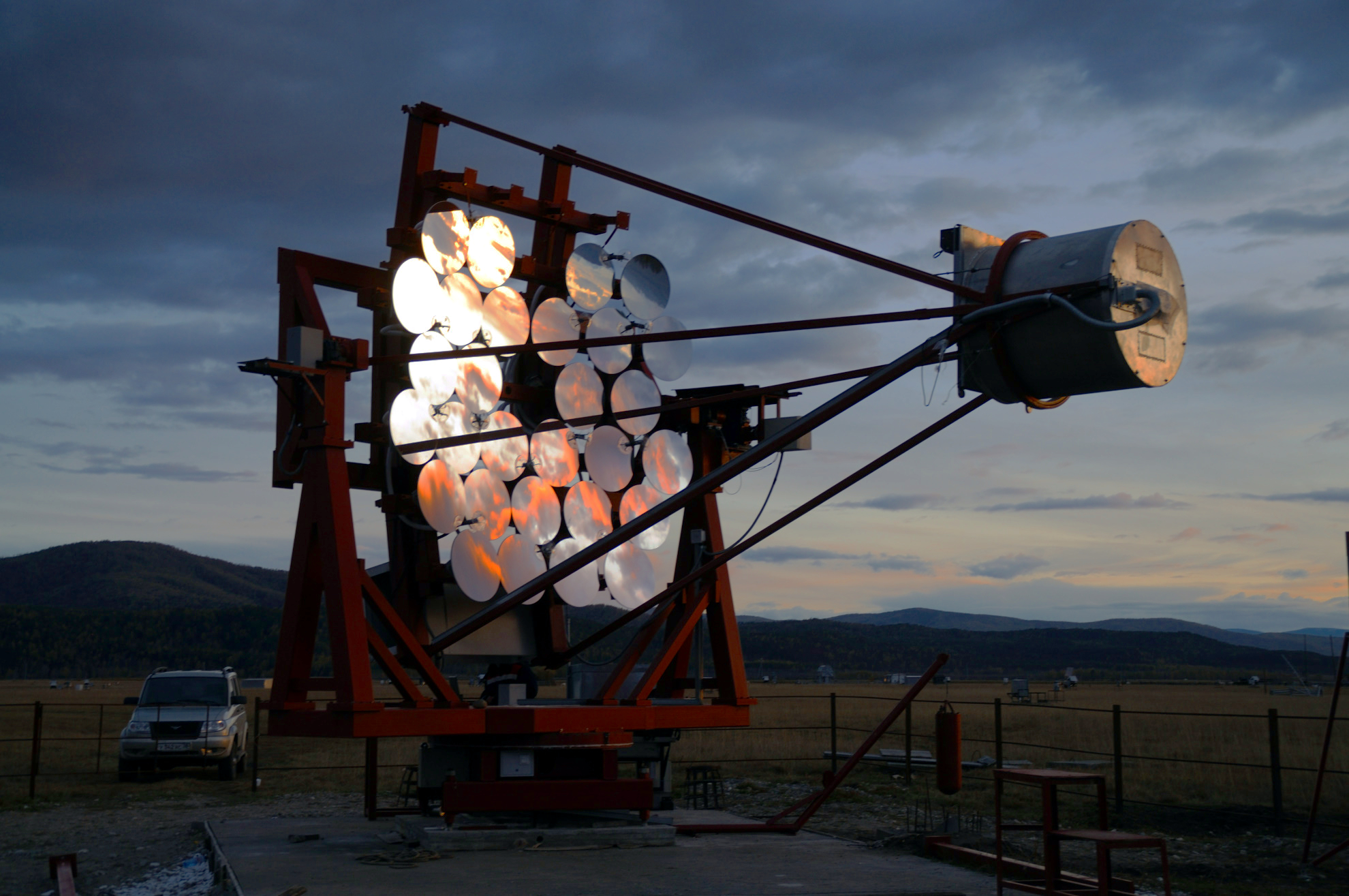In JINR laboratories: mirrors for TAIGA experiment
News, 08 September 2020
In the frames of the TAIGA international experiment, which is one of the priority projects of JINR in the fields of astrophysical research, the Laboratory of Nuclear Problems JINR produces Imaging Atmospheric Cherenkov Telescopes (IACT). The video below demonstrates one of the stages in the production of optical mirrors for the IACT telescope: mechanized polishing of the workpiece on optical resin.
The whole process consists of four stages: a flat workpiece of glass is heated in a furnace and given a spherical shape. Then, the future mirrors are ground and polished to achieve a mirror surface of the necessary quality. At the final stage, a mirror reflective coating is applied. Production of one telescope requires about 40 such mirrors.
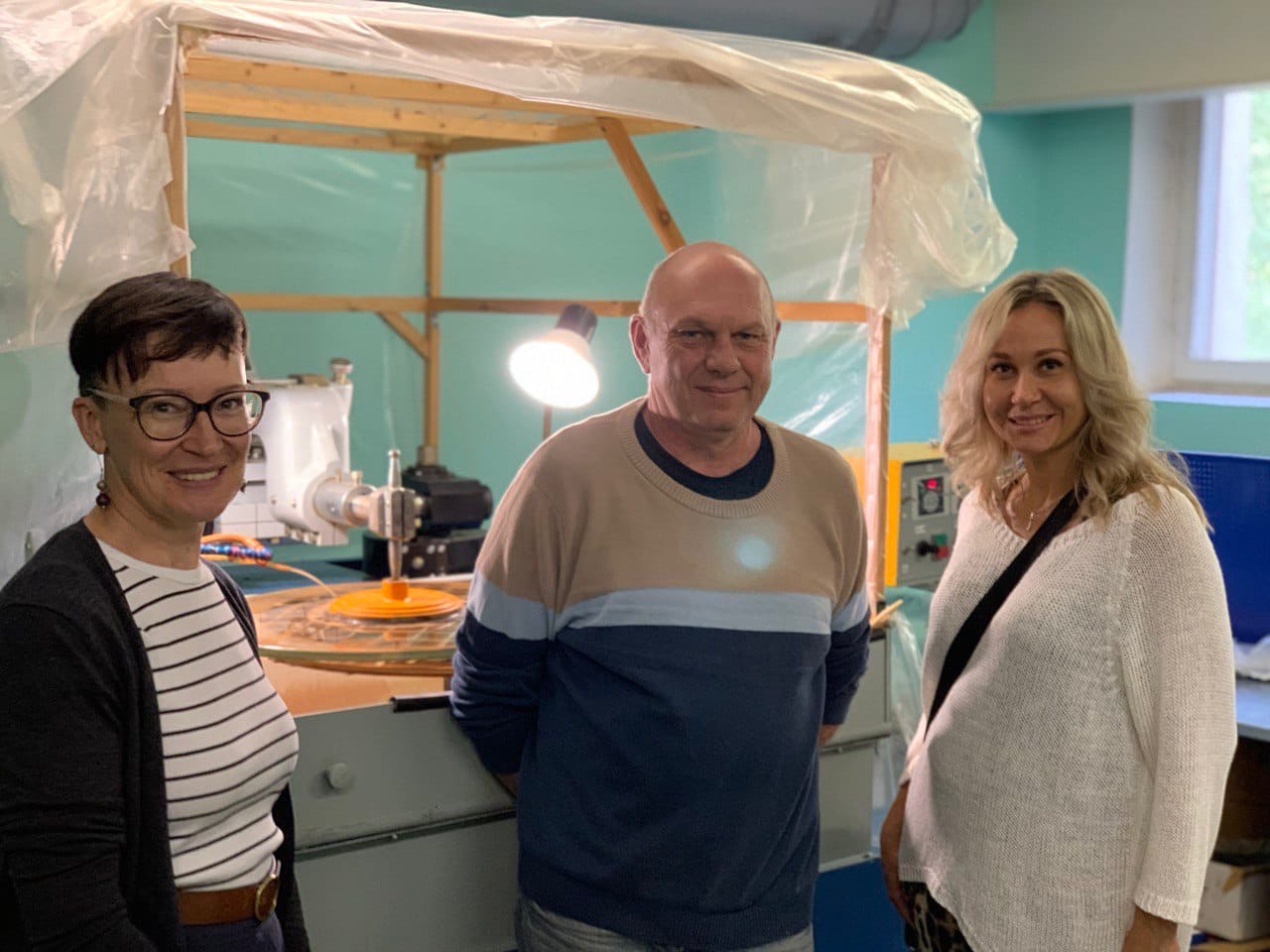 In the photo: furnace for imparting spherical form to workpiece, polishing machine, and DLNP employees on the background: Kovalchuk Vladimir Anatolievich, construction metal worker (Scientific and Experimental Department of Particle Physics, Sector No. 4 of astrophysical research), Maria Pilipenko and Irina Sidorova (Social Communication Group)
In the photo: furnace for imparting spherical form to workpiece, polishing machine, and DLNP employees on the background: Kovalchuk Vladimir Anatolievich, construction metal worker (Scientific and Experimental Department of Particle Physics, Sector No. 4 of astrophysical research), Maria Pilipenko and Irina Sidorova (Social Communication Group)
The main goal of the Gamma ray Observatory TAIGA is to study gammaradiation and charged cosmic rays in the energy range of 1013 eV – 1018 eV. It is an international scientific project searching for the origin of sources of Galactic cosmic rays with energies above 1 PeV. The northernmost location of the facility gives it some advantages compared to other experiments with similar scientific goals. The first phase of TAIGA will begin observations in 2020, a few years earlier than other competing projects. The JINR team has full responsibility in the imaging atmospheric Cherenkov telescopes (IACT) design, mechanical manufacturing and tests; it is also responsible for tests of all 1,200 PMTs for two IACT telescopes.
On 29 June 2020, the 53rd meeting of the Programme Advisory Committee for Particle Physics was held chaired by I. Tserruya. Reporting on the JINR participation in the TAIGA project, Head of the DLNP Sector of Astrophysical Research Leonid Tkachev said that in 2019-2020, a complex of telescopes successfully passed the quality control of equipment and algorithms of data processing. The main responsibility of the JINR group is to design the Imaging Atmospheric Cherenkov Telescope (IACT), to produce and test mechanics. The third telescope was sent to Siberia in April 2020, the 4th IACT will be built in 2021-2023. The group also takes part in the Monte Carlo modelling and data analysis. The PAC PP members noted that the JINR group plays a significant role in the TAIGA collaboration represented by Russian and international scientific centres.
Commenting on the report made at the joint meeting of the Programme Advisory Committees for Particle Physics and Nuclear Physics (January 2019), at which the Institute’s projects and themes on neutrino, astrophysics and dark matter were evaluated, Director of the Dzhelepov Laboratory of Nuclear Problems Vadim Bednyakov spoke about peculiarities of the TAIGA project: “A distinctive feature of the “TAIGA” project is that this is a hybrid facility aimed at registration of cosmic gamma radiation streams and cosmic rays. It is placed in the same point of the Earth’s surface as the Baikal facility is. And this does look attractive as far as modern models of space photon and neutrino production show that high-energy photon and neutrino have almost “identical origins” – from pion decays: neutrino – from charged, photons – from neutral. And if the expected balance is observed, then we will understand how space rays emerge, how they are accelerated and where they are from. Our team is engaged in the development of the Cherenkov telescopes.”
We should also note that one of the invited experts in the creation of the TAIGA telescopes is a famous scientist Akeo Misaki, Professor of the Saitama University, Visiting Professor of SINP MSU and the Altai State University, who visited JINR in July 2018 for the first time.
Briefly about the project
The project is intended to study the high-energy region of the spectrum of gamma rays from the Universe with a focus on energies beyond 10 TeV. The main goal of the study is to find an answer to the question of the origin of cosmic rays in the range from 1014 to 1018 eV. The experiment is located near the southern end of Lake Baikal on the astrophysical test site in the Tunka Valley (Republic of Buryatia) and comprises several facilities measuring the parameters of extensive air showers generated by the interaction of cosmic rays or high-energy gamma rays with the atmosphere. As a result of these measurements, it is possible to reconstruct the direction of arrival of cosmic rays, their type, and energy. Measurement accuracy is enhanced by a combination of different detection systems. At the same time, studies of the TAIGA prototype are underway to increase the observatory sensitivity by using new sensor technologies and larger effective areas of the facility (increased by up to 10 times).
Participating organizations:
- API ISU, Irkutsk
- MPI for Physics, Munich
- NRNU “MEPhI”, Moscow
- SINP MSU, Moscow
- DESY, Zeuthen
- Univ. Hamburg
- INR, Moscow
- JINR, Dubna
- HUB, Berlin
- IZMIRAN, Troitsk
- ASU, Barnaul
- ISS, Bucharest
- UniTo, Torino
- INP, Novosibirsk
- NSU, Novosibirsk
DLNP materials were used to prepare the article
